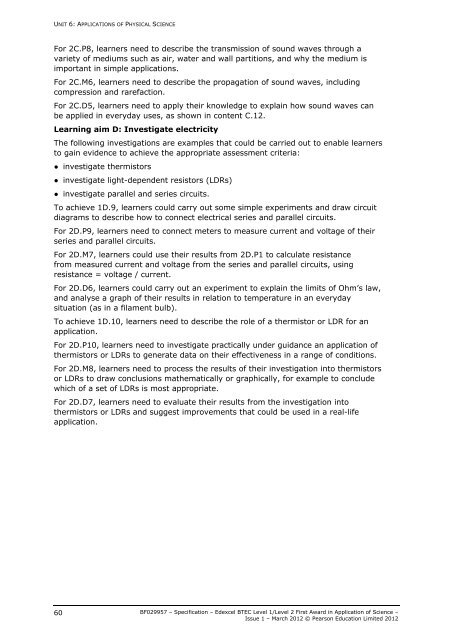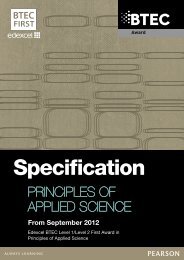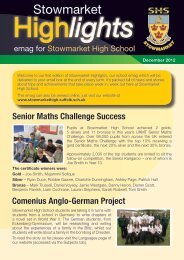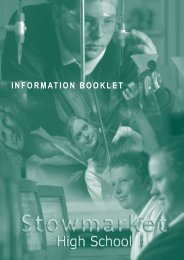BTEC First Award in Application of Science - specification - Edexcel
BTEC First Award in Application of Science - specification - Edexcel
BTEC First Award in Application of Science - specification - Edexcel
Create successful ePaper yourself
Turn your PDF publications into a flip-book with our unique Google optimized e-Paper software.
UNIT 6: APPLICATIONS OF PHYSICAL SCIENCE<br />
For 2C.P8, learners need to describe the transmission <strong>of</strong> sound waves through a<br />
variety <strong>of</strong> mediums such as air, water and wall partitions, and why the medium is<br />
important <strong>in</strong> simple applications.<br />
For 2C.M6, learners need to describe the propagation <strong>of</strong> sound waves, <strong>in</strong>clud<strong>in</strong>g<br />
compression and rarefaction.<br />
For 2C.D5, learners need to apply their knowledge to expla<strong>in</strong> how sound waves can<br />
be applied <strong>in</strong> everyday uses, as shown <strong>in</strong> content C.12.<br />
Learn<strong>in</strong>g aim D: Investigate electricity<br />
The follow<strong>in</strong>g <strong>in</strong>vestigations are examples that could be carried out to enable learners<br />
to ga<strong>in</strong> evidence to achieve the appropriate assessment criteria:<br />
● <strong>in</strong>vestigate thermistors<br />
● <strong>in</strong>vestigate light-dependent resistors (LDRs)<br />
● <strong>in</strong>vestigate parallel and series circuits.<br />
To achieve 1D.9, learners could carry out some simple experiments and draw circuit<br />
diagrams to describe how to connect electrical series and parallel circuits.<br />
For 2D.P9, learners need to connect meters to measure current and voltage <strong>of</strong> their<br />
series and parallel circuits.<br />
For 2D.M7, learners could use their results from 2D.P1 to calculate resistance<br />
from measured current and voltage from the series and parallel circuits, us<strong>in</strong>g<br />
resistance = voltage / current.<br />
For 2D.D6, learners could carry out an experiment to expla<strong>in</strong> the limits <strong>of</strong> Ohm’s law,<br />
and analyse a graph <strong>of</strong> their results <strong>in</strong> relation to temperature <strong>in</strong> an everyday<br />
situation (as <strong>in</strong> a filament bulb).<br />
To achieve 1D.10, learners need to describe the role <strong>of</strong> a thermistor or LDR for an<br />
application.<br />
For 2D.P10, learners need to <strong>in</strong>vestigate practically under guidance an application <strong>of</strong><br />
thermistors or LDRs to generate data on their effectiveness <strong>in</strong> a range <strong>of</strong> conditions.<br />
For 2D.M8, learners need to process the results <strong>of</strong> their <strong>in</strong>vestigation <strong>in</strong>to thermistors<br />
or LDRs to draw conclusions mathematically or graphically, for example to conclude<br />
which <strong>of</strong> a set <strong>of</strong> LDRs is most appropriate.<br />
For 2D.D7, learners need to evaluate their results from the <strong>in</strong>vestigation <strong>in</strong>to<br />
thermistors or LDRs and suggest improvements that could be used <strong>in</strong> a real-life<br />
application.<br />
60<br />
BF029957 – Specification – <strong>Edexcel</strong> <strong>BTEC</strong> Level 1/Level 2 <strong>First</strong> <strong>Award</strong> <strong>in</strong> <strong>Application</strong> <strong>of</strong> <strong>Science</strong> –<br />
Issue 1 – March 2012 © Pearson Education Limited 2012








